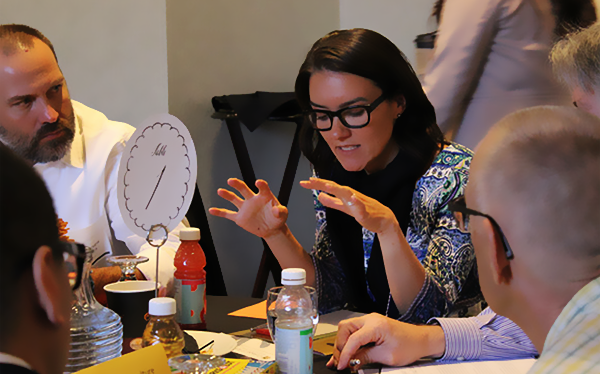Time for action: Faculty, staff, students plan for student success
It’s time for action.
That was the message at this year’s 10th annual Undergraduate Experiences Symposium. Since 2005, staff, faculty and students have attended this annual gathering to discuss opportunities for growth of undergraduate education at CU Denver, but this year was all about moving from discussion to implementation.
“We’re here to think big, to think about what we do as a university as a whole,” Jeff Franklin, associate dean for Undergraduate Curriculum & Student Affairs, said in his opening comments. “We’re here to design our university’s future.”
This year’s symposium drew a record 150 people, 70 percent of whom were faculty—the largest representation of active teachers to date. Included in that crowd were the deans of each school and college and Provost Rod Nairn.
“There’s power in the room,” said keynote speaker Ken O’Donnell of California State University. “Today, tell them how they can help you put your goals in practice.”
INTEGRATED LEARNING
The goals, established at last year’s symposium, include improved communication across school units, more experiential learning opportunities and more integrated learning opportunities for students.
Last year, attendees defined integrated learning as an interdisciplinary, application-oriented form of learning that prepares students to be innovative, analytical, civic-minded thinkers. It is the result of faculty and staff coming together in ways the organizational chart doesn’t require. This year, attendees focused on finding ways to implement that principle.
Keynote speakers O’Donnell and Greg Cook of University of Wisconsin-Whitewater reminded attendees that this kind of learning is critical for student success post-graduation. Because technological advancement has eliminated many middle-class jobs, students need a more integrated skill set. Now, O’Donnell said, the ability to think, communicate, and solve problems is more important than a student’s specific major. Citing Daniel Pink’s A Whole New Mind, he explained that students need to think about both function and design, argument and story, logic and empathy, pragmatism and play.
“Now we have to teach almost everything to almost everyone,” O’Donnell said. “That means we have to do better.”
ACTION PLANS
Looking for ways to “do better,” the deans of each school and college formed a panel to explore where integrated learning is already happening on campus and how it could be increased. The discussion showed that there are already exciting examples of integrated learning happening in each college, including a new “shadow day” that allows Business School students to spend a day with a real executive and classes collaboratively taught by faculty from different programs. But, the panel said, we can do more.
Attendees were then asked to offer three ideas to do more in the year ahead—three ways to execute the established goals of increased collaboration across colleges, experiential learning and integrated learning. The ideas were posted on the walls for all attendees, including university leadership, to see.
“It’s encouraging,” Maria-Luisa Lins, a student attendee, said walking around the room. “It’s great to see all these ideas from faculty and staff giving up their Friday to work on making my life as a student better.”
As the last action of the day, the provost gathered the ideas from every group and read the 10 most popular campus goals to the room. These included creating discipline-focused writing courses, extending first-year seminar to transfer students and encouraging inter-disciplinary core courses. As he read the ideas, Nairn gave his thoughts on their implementation, inviting attendees to comment as well. If there was any doubt that the symposium was focused on action, the provost erased it.
“Well,” he said, looking up from the list of ideas at the end of the day, “let’s get some action.”


